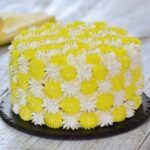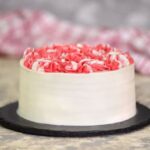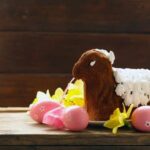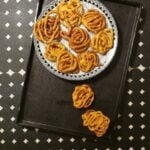Are you looking to learn how to make a cake with nice decorating frosting that will impress your guests and satisfy your sweet tooth? Decorating frosting plays a crucial role in creating aesthetically pleasing and delicious cakes. From adding flavor and color to providing the final touch of creativity, the frosting is what takes a cake from ordinary to extraordinary.
Selecting the right ingredients for both your cake and frosting is key to achieving success in your baking endeavors. From choosing high-quality butter and vanilla extract for your cake base to picking out the perfect type of sugar and food coloring for your frosting, each component contributes to the overall taste and appearance of your masterpiece.
In this comprehensive guide, we will walk you through step-by-step instructions on how to bake the perfect cake base, tips for making flawless frosting including consistency, flavor, and color considerations, as well as techniques for applying the frosting evenly on the cake. Whether you are a novice baker or a seasoned pro, mastering these skills will elevate your cake-making game and leave you with stunning results that will surely delight your family and friends.
Selecting the Right Ingredients for Your Cake and Frosting
When it comes to making a cake with nice decorating frosting, selecting the right ingredients is crucial in order to achieve that perfect balance of flavor, texture, and appearance. Let’s take a closer look at what key ingredients you will need for both the cake base and the frosting.
Cake Ingredients
For the cake itself, you will typically need basic ingredients such as flour, sugar, baking powder/soda, eggs, butter or oil, and milk. However, depending on the type of cake you want to make (i.e. vanilla, chocolate, red velvet), you may need additional ingredients like cocoa powder, food coloring, or flavor extracts. It’s important to choose high-quality ingredients that will result in a moist and flavorful cake base.
Frosting Ingredients
When it comes to decorating frosting, there are several types to choose from including buttercream, cream cheese frosting, ganache, or even royal icing. Each type of frosting requires different ingredients such as powdered sugar, butter or cream cheese, vanilla extract or other flavorings.
You’ll also need food coloring if you want to create different colors for decorating your cake. Pay attention to the quality of your ingredients as well as their freshness for the best results in terms of taste and consistency.
Overall, selecting the right ingredients for your cake and frosting sets the foundation for a successful baking experience. Make sure to follow recipes closely and don’t be afraid to experiment with different flavors and textures until you find the perfect combination for your own unique creation on how to make a cake with nice decorating frosting.
Step-by-Step Guide on How to Bake the Perfect Cake Base
Baking the perfect cake base is essential for creating a delicious and visually appealing cake. Here is a step-by-step guide on how to achieve a moist, flavorful, and beautiful cake base for your masterpiece:
- Preheat your oven to the temperature specified in the recipe. Make sure to prepare your baking pans by greasing and flouring them to prevent sticking.
- Gather all your ingredients at room temperature. This includes butter, eggs, milk, and any other liquids that are called for in the recipe.
- In a mixing bowl, cream together the butter and sugar until light and fluffy. This step ensures that your cake batter will be well aerated and have a tender crumb.
- Gradually add in the eggs one at a time, ensuring each egg is fully incorporated before adding the next. This helps create a smooth batter.
- Alternate adding the dry ingredients (flour, baking powder, salt) with the wet ingredients (milk, vanilla extract) into the butter-sugar mixture. Be careful not to overmix as this can result in a tough cake.
- Pour the batter into your prepared pans and smooth out the tops with a spatula. Tap the pans gently on the counter to remove any air bubbles.
- Bake in the preheated oven according to the recipe instructions. Check for doneness by inserting a toothpick into the center of the cake – if it comes out clean, your cake is ready.
Following these steps will help you bake a moist and flavorful cake base that serves as the perfect canvas for your decorating frosting. Remember that every great cake starts with a solid foundation.
Tips for Making the Frosting
When it comes to making a cake with nice decorating frosting, one of the key aspects to pay attention to is the frosting itself. The consistency, flavor, and color of the frosting can truly make or break your cake decorating experience. To start off, it is essential to ensure that your frosting has the right consistency.
The texture of your frosting should be smooth and spreadable, allowing you to easily cover your cake without any lumps or bumps. If your frosting is too thick, you can add a splash of milk or water to thin it out. On the other hand, if it is too runny, you can mix in some powdered sugar to thicken it up.
Flavor is another important factor when it comes to frosting. You want to make sure that the taste of your frosting complements the flavor of your cake. For example, chocolate cake pairs well with rich chocolate buttercream frosting, while lemon cake may be better suited for a tangy lemon cream cheese frosting. Experimenting with different extracts such as vanilla, almond, or even coffee can help elevate the flavor profile of your frosting and take your cake to the next level.
In addition to consistency and flavor, don’t forget about the color of your frosting. Adding food coloring can transform your plain white frosting into a rainbow of possibilities. Whether you’re going for pastel hues or bold and vibrant colors, you have complete creative control over how you want your cake’s decoration to look.
Remember that a little goes a long way with food coloring – start with a small amount and gradually add more until you achieve your desired shade. By paying attention to these tips for making the perfect frosting – from ensuring the right consistency to experimenting with flavors and colors – you’ll be well on your way to creating a beautifully decorated cake that tastes as good as it looks.
| Aspect | Tips |
|---|---|
| Consistency | Ensure smooth and spreadable texture; adjust thickness by adding liquids or powdered sugar |
| Flavor | Pair frosting flavor with cake flavor; experiment with different extracts for enhanced taste |
| Color | Add food coloring for desired shades; start with small amounts and build up |
How to Apply Frosting Evenly on the Cake
When it comes to decorating a cake with frosting, achieving an even application is key to creating a polished and professional-looking final product. Here are some step-by-step tips on how to apply frosting evenly on your cake:
- Start by placing your cake on a turntable or revolving cake stand. This will make it easier to rotate the cake as you apply the frosting.
- Use an offset spatula or icing smoother to apply a thin layer of frosting, known as a crumb coat, over the entire surface of the cake. This will help seal in any crumbs and create a smooth base for your final layer of frosting.
- Once the crumb coat is set, add a generous amount of frosting on top of the cake. Use the offset spatula to spread the frosting from the center outwards, creating an even layer across the top and sides of the cake.
Achieving an even coat of frosting requires patience and attention to detail. Take your time and work slowly to ensure that the frosting is applied smoothly and evenly. If necessary, you can always scrape off excess frosting and reapply until you are satisfied with the result.
Remember that practice makes perfect when it comes to applying frosting evenly on a cake. Don’t be discouraged if your first attempt isn’t flawless – with time and experience, you’ll become more comfortable and confident in your decorating skills. By following these tips and techniques, you’ll be well on your way to creating beautifully decorated cakes with nice decorating frosting.
Creative Decorating Techniques Using Frosting
Decorating a cake with frosting is not only about making it delicious but also about making it visually appealing. Creative decorating techniques can take your cake from ordinary to extraordinary. One of the most popular methods of decorating a cake with frosting is piping.
Piping involves using a pastry bag and various tips to create intricate designs on the surface of the cake. To pipe frosting effectively, it is important to have the right consistency – not too thick that it won’t come out smoothly, and not too thin that it will spread uncontrollably.
Another elegant technique for decorating cakes with frosting is creating rosettes. Rosettes are flower-like swirls made by simply squeezing frosting through a star-shaped tip. They add a touch of sophistication and beauty to any cake, whether it’s for a birthday celebration or a wedding.
Additionally, fondant is another fantastic option for decorating cakes with frosting. Fondant can be rolled out into different shapes and sizes to cover the entire cake or used as accents for more intricate designs.
Mastering these creative decorating techniques can elevate your cake-making skills to new heights. With the right tools, ingredients, and practice, you can transform a simple cake into a work of art that will impress everyone at your next gathering. Whether you’re a seasoned baker or just starting out, experimenting with different frostings and decorations will allow you to unleash your creativity and make stunning cakes that not only taste heavenly but also look visually appealing.
| Creative Technique | Description |
|---|---|
| Piping | Using a pastry bag and tips to create intricate designs on the cake. |
| Rosettes | Creating flower-like swirls by squeezing frosting through a star-shaped tip. |
| Fondant | A versatile option for covering cakes or creating decorative accents. |
Troubleshooting Common Frosting Issues and How to Fix Them
When it comes to decorating a cake with frosting, there may be times when things don’t go as planned. Common frosting issues can include lumps in the frosting, air bubbles, and frosting that is too runny or too stiff. These issues can be frustrating, but with some troubleshooting and know-how, they can easily be fixed.
One common issue that many bakers face is lumpy frosting. This can happen if the ingredients are not at the right temperature or if the butter or shortening was not creamed properly. To fix this issue, you can try beating the frosting again on low speed or gently warming it up in the microwave for a few seconds before rebeating it. Another option is to strain the frosting through a fine mesh sieve to remove any lumps.
Air bubbles in frosting can also be a problem when trying to achieve a smooth finish on your cake. To prevent this issue, make sure to use fresh ingredients and mix the frosting slowly to avoid incorporating too much air. If air bubbles do appear, you can try tapping the cake on a table or counter to release them, or gently smoothing them out with a palette knife.
If your frosting is too runny, try adding more powdered sugar or chilling it in the refrigerator for a short time to help it firm up. On the other hand, if your frosting is too stiff and difficult to spread, try adding a small amount of milk or cream until you reach your desired consistency.
By troubleshooting these common frosting issues and following these tips on how to fix them, you’ll be able to create beautifully decorated cakes with nice decorating frosting every time.
Storage and Serving Tips for Your Beautifully Decorated Cake
Storing Your Cake
After spending all that time and effort creating a beautifully decorated cake, the last thing you want is for it to go stale or lose its freshness. Proper storage is key to preserving your creation. If your cake is frosted with a buttercream or cream cheese frosting, it can be stored at room temperature for up to three days. Simply cover the cake with a cake dome or an overturned bowl to protect it from dust and debris.
For Longer Storage
If you need to store your cake for longer than three days, consider refrigerating it instead. Wrap the cake in plastic wrap or aluminum foil before placing it in the refrigerator. Let the cake sit at room temperature for about 30 minutes before serving to allow the flavors to develop and the frosting to soften.
Serving Your Cake
When it’s time to serve your beautifully decorated cake, remember presentation is key. Use a sharp knife dipped in hot water to get clean slices without ruining the frosting decorations. Serve the cake on a beautiful platter or cake stand to showcase your hard work. Add some fresh berries, chopped nuts, or a dollop of whipped cream on each slice for an extra touch of elegance.
By following these storage and serving tips, you can ensure that your beautifully decorated cake stays fresh and looks just as stunning when served as when you first finished decorating it. Enjoy showing off your baking skills and sharing your tasty creations with friends and family.
Conclusion
In conclusion, decorating frosting plays a crucial role in enhancing the appearance and flavor of a cake. It allows for creativity and personalization, making each cake unique and visually appealing. By carefully selecting the right ingredients, following a step-by-step guide to baking the perfect cake base, and mastering the art of making and applying frosting, anyone can create a beautifully decorated cake that will impress both visually and taste-wise.
When it comes to showcasing your final product, take pride in your creation and don’t be afraid to experiment with different decorating techniques such as piping, rosettes, or fondant. These creative touches can truly elevate the overall look of your cake. Remember to have fun with it and let your imagination run wild.
I encourage all readers to try their hand at making their own cakes with nice decorating frosting. With practice and patience, anyone can become skilled in the art of cake decorating. Whether it’s for a special occasion or just as a fun hobby, there’s nothing quite like the satisfaction of creating something beautiful and delicious from scratch. So go ahead, gather your ingredients, follow the tips outlined in this article, and start creating your own masterpiece today.
Frequently Asked Questions
What Is the Best Frosting for Decorating a Cake?
The best frosting for decorating a cake is buttercream. It is versatile, easy to work with, and holds its shape well when piping different designs. Buttercream also provides a smooth and creamy base for adding decorations like fondant or sprinkles.
How Do You Make Icing Look Pretty on a Cake?
To make icing look pretty on a cake, you can use various techniques such as piping, spreading, or drizzling it in an artistic manner. Piping with different tips can create beautiful patterns, while spreading the icing smoothly with an offset spatula gives a clean and polished look.
Adding edible flowers, fruits, or other decorations can enhance the overall aesthetic appeal of the cake.
How to Make a Cake Good for Decorating?
To make a cake good for decorating, it’s essential to start with a sturdy base that can support the weight of the frosting and decorations. Using a dense cake recipe like pound cake or chocolate cake works better than light and airy cakes like sponge cake.
Allowing the cake to cool completely before frosting it is crucial to prevent the icing from melting or sliding off. Additionally, leveling the top of the cake ensures a smooth surface for decorating and stacking multiple layers securely.

Welcome to my blog about home and family. This blog is a place where I will share my thoughts, ideas, and experiences related to these important topics. I am a stay-at-home mom with two young children. I hope you enjoy reading it! and may find some helpful tips and ideas that will make your home and family life even better!





